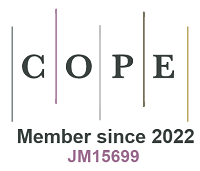REFERENCES
1. Jiang, H.; Wu, X.; Zhang, H.; et al. Toward effective electrocatalytic C–N coupling for the synthesis of organic nitrogenous compounds using CO2 and biomass as carbon sources. SusMat 2023, 3, 781-820.
2. Wu, X.; Yan, Q.; Wang, H.; et al. Heterostructured catalytic materials as advanced electrocatalysts: classification, synthesis, characterization, and application. Adv. Funct. Mater. 2024, 34, 2404535.
3. Zhang, Z.; Song, J.; Han, B. Catalytic transformation of lignocellulose into chemicals and fuel products in ionic liquids. Chem. Rev. 2017, 117, 6834-80.
4. Sudarsanam, P.; Zhong, R.; Van den Bosch, S.; Coman, S. M.; Parvulescu, V. I.; Sels, B. F. Functionalised heterogeneous catalysts for sustainable biomass valorisation. Chem. Soc. Rev. 2018, 47, 8349-402.
5. Mane, R.; Jeon, Y.; Rode, C. A review on non-noble metal catalysts for glycerol hydrodeoxygenation to 1,2-propanediol with and without external hydrogen. Green. Chem. 2022, 24, 6751-81.
6. Zhao, H.; Zheng, L.; Li, X.; Chen, P.; Hou, Z. Hydrogenolysis of glycerol to 1,2-propanediol over Cu-based catalysts: a short review. Catal. Today. 2020, 355, 84-95.
7. Główka, M.; Krawczyk, T. New trends and perspectives in production of 1,2-propanediol. ACS. Sustain. Chem. Eng. 2023, 11, 7274-87.
8. Zheng, M.; Pang, J.; Sun, R.; Wang, A.; Zhang, T. Selectivity control for cellulose to diols: dancing on eggs. ACS. Catal. 2017, 7, 1939-54.
9. Gu, M.; Shen, Z.; Yang, L.; et al. Reaction route selection for cellulose hydrogenolysis into C2/C3 glycols by ZnO-modified Ni-W/β-zeolite catalysts. Sci. Rep. 2019, 9, 11938.
10. Pang, J.; Zheng, M.; Li, X.; et al. Selective conversion of concentrated glucose to 1,2-propylene glycol and ethylene glycol by using RuSn/AC catalysts. Appl. Catal. B. Environ. 2018, 239, 300-8.
11. Yazdani, P.; Wang, B.; Du, Y.; Kawi, S.; Borgna, A. Lanthanum oxycarbonate modified Cu/Al2O3 catalysts for selective hydrogenolysis of glucose to propylene glycol: base site requirements. Catal. Sci. Technol. 2017, 7, 4680-90.
12. Kirali AA, Sreekantan S, Marimuthu B. Ce promoted Cu/γ-Al2O3 catalysts for the enhanced selectivity of 1,2-propanediol from catalytic hydrogenolysis of glucose. Catal. Commun. 2022, 165, 106447.
13. Baniamerian, H.; Høj, M.; Beier, M. J.; Jensen, A. D. Catalytic conversion of sugars and polysaccharides to glycols: a review. Appl. Catal. B. Environ. 2023, 330, 122650.
14. Yang, Y.; Ren, D.; Shang, C.; Ding, Z.; Luo, X. Site isolated Ru clusters and sulfoacids in a yolk-shell nanoreactor towards cellulose valorization to 1,2-propylene glycol. Chem. Eng. J. 2023, 452, 139206.
15. Xin, Q.; Yu, S.; Jiang, L.; et al. Bifunctional catalyst with a Yolk–Shell structure catalyzes glucose to produce ethylene glycol. J. Phys. Chem. C. 2021, 125, 6632-42.
16. Yazdani, P.; Wang, B.; Rimaz, S.; Kawi, S.; Borgna, A. Glucose hydrogenolysis over Cu-La2O3/Al2O3: mechanistic insights. Mol. Catal. 2019, 466, 138-45.
17. Gu, M.; Shen, Z.; Zhang, W.; et al. Hydrogenolysis of glucose into propylene glycol over Pt/SiO2@Mg(OH)2 catalyst. ChemCatChem 2020, 12, 3447-52.
18. Lv, M.; Zhang, Y.; Xin, Q.; et al. Pd@Al-containing mesoporous silica Yolk–Shell-structured nanospheres as high performance nanoreactors for the selective hydrogenolysis of glucose to 1,2-propylene glycol. Chem. Eng. J. 2020, 396, 125274.
19. Liu, C.; Zhang, C.; Sun, S.; et al. Effect of WOx on bifunctional Pd–WOx/Al2O3 catalysts for the selective hydrogenolysis of glucose to 1,2-propanediol. ACS. Catal. 2015, 5, 4612-23.
20. Ji, J.; Xu, Y.; Liu, Y.; Zhang, Y. A nanosheet Ru/WO3 catalyst for efficient conversion of glucose to butanediol. Catal. Commun. 2020, 144, 106074.
21. Liu, Y.; Liu, Y.; Zhang, Y. The synergistic effects of Ru and WOx for aqueous-phase hydrogenation of glucose to lower diols. Appl. Catal. B. Environ. 2019, 242, 100-8.
22. Luo, S.; Shu, T.; Mao, M.; et al. Efficient hydrogenolysis of fructose to 1,2-propanediol over bifunctional Ru-WO-MgO catalysts under mild reaction conditions via enhancing the chemoselective cleavage of C–C bonds. J. Energy. Chem. 2024, 92, 311-21.
23. Lee, T. H.; Jung, J. G.; Kim, Y. J.; et al. Defect engineering in metal-organic frameworks towards advanced mixed matrix membranes for efficient propylene/propane separation. Angew. Chem. Int. Ed. Engl. 2021, 60, 13081-8.
24. Cai, G.; Jiang, H. L. A modulator-induced defect-formation strategy to hierarchically porous metal-organic frameworks with high stability. Angew. Chem. Int. Ed. Engl. 2017, 56, 563-7.
25. Jiao, L.; Seow, J. Y. R.; Skinner, W. S.; Wang, Z. U.; Jiang, H. Metal–organic frameworks: structures and functional applications. Mater. Today. 2019, 27, 43-68.
26. Huang, G.; Yang, Q.; Xu, Q.; Yu, S.; Jiang, H. Polydimethylsiloxane coating for a palladium/MOF composite: highly improved catalytic performance by surface hydrophobization. Angew. Chem. Int. Ed. Engl. 2016, 128, 7505-9.
27. Insyani, R.; Verma, D.; Cahyadi, H. S.; et al. One-pot di- and polysaccharides conversion to highly selective 2,5-dimethylfuran over Cu-Pd/Amino-functionalized Zr-based metal-organic framework (UiO-66(NH2))@SGO tandem catalyst. Appl. Catal. B. Environ. 2019, 243, 337-54.
28. Heidary, N.; Chartrand, D.; Guiet, A.; Kornienko, N. Rational incorporation of defects within metal-organic frameworks generates highly active electrocatalytic sites. Chem. Sci. 2021, 12, 7324-33.
29. Li, Z.; Lu, X.; Sun, W.; et al. One-step synthesis of single palladium atoms in WO2.72 with high efficiency in chemoselective hydrodeoxygenation of vanillin. Appl. Catal. B. Environ. 2021, 298, 120535.
30. Wu, D.; Guo, Z.; Yin, X.; et al. Metal-organic frameworks as cathode materials for Li-O2 batteries. Adv. Mater. 2014, 26, 3258-62.
31. Yang, Q.; Gao, D.; Li, C.; et al. Highly dispersed Pt on partial deligandation of Ce-MOFs for furfural selective hydrogenation. Appl. Catal. B. Environ. 2023, 328, 122458.
32. Wang, M.; Xu, Y.; Peng, C. K.; et al. Site-specified two-dimensional heterojunction of Pt nanoparticles/metal-organic frameworks for enhanced hydrogen evolution. J. Am. Chem. Soc. 2021, 143, 16512-8.
33. Zahid, M.; Ismail, A.; Sohail, M.; Zhu, Y. Improving selective hydrogenation of carbonyls bond in α, β-unsaturated aldehydes over Pt nanoparticles encaged within the amines-functionalized MIL-101-NH2. J. Colloid. Interface. Sci. 2022, 628, 141-52.
34. Deng, X.; Yang, L.; Huang, H.; et al. Shape-defined hollow structural Co-MOF-74 and metal nanoparticles@Co-MOF-74 composite through a transformation strategy for enhanced photocatalysis performance. Small 2019, 15, e1902287.
35. Sing, K. S. W.; Williams, R. T. Physisorption hysteresis loops and the characterization of nanoporous materials. Adsorpt. Sci. Technol. 2004, 22, 773-82. https://www.researchgate.net/publication/42790927_Physisorption_Hysteresis_Loops_and_the_Characterization_of_Nanoporous_Materials. (accessed on 2025-03-14)
36. Wang, Z.; Li, W.; Zhang, Z.; Jia, L.; Wang, J. Effects of different Al2O3 supports on Pt/WOx-based catalysts for selective hydrogenolysis of glucose to 1,2-propylene glycol. ACS. Sustain. Chem. Eng. 2023, 11, 17331-9.
37. Feng, Y.; Wang, C.; Cui, P.; et al. Ultrahigh photocatalytic CO2 reduction efficiency and selectivity manipulation by single-tungsten-atom oxide at the atomic step of TiO2. Adv. Mater. 2022, 34, e2109074.
38. Xiao, L.; Li, G.; Yang, Z.; et al. Engineering of amorphous PtOx interface on Pt/WO3 nanosheets for ethanol oxidation electrocatalysis. Adv. Funct. Mater. 2021, 31, 2100982.
39. Cao, Y.; Wang, J.; Kang, M.; Zhu, Y. Catalytic conversion of glucose and cellobiose to ethylene glycol over Ni–WO3/SBA-15 catalysts. RSC. Adv. 2015, 5, 90904-12.
40. Hamdy, M. S.; Eissa, M. A.; Keshk, S. M. A. S. New catalyst with multiple active sites for selective hydrogenolysis of cellulose to ethylene glycol. Green. Chem. 2017, 19, 5144-51.
41. Wang, F.; Ueda, W.; Xu, J. Detection and measurement of surface electron transfer on reduced molybdenum oxides (MoOx) and catalytic activities of Au/MoOx. Angew. Chem. Int. Ed. Engl. 2012, 51, 3883-7.
42. Zhao, X.; Wang, J.; Yang, M.; et al. Selective hydrogenolysis of glycerol to 1,3-propanediol: manipulating the frustrated lewis pairs by introducing gold to Pt/WOx. ChemSusChem 2017, 10, 818.
43. Idriss, H. On the wrong assignment of the XPS O1s signal at 531-532 eV attributed to oxygen vacancies in photo- and electro-catalysts for water splitting and other materials applications. Surf. Sci. 2021, 712, 121894.
44. Morgan, D. J. Photoelectron spectroscopy of ceria: reduction, quantification and the myth of the vacancy peak in XPS analysis. Surf. Interf. Anal. 2023, 55, 845-50.
45. Frankcombe, T. J.; Liu, Y. Interpretation of oxygen 1s X-ray photoelectron spectroscopy of ZnO. Chem. Mater. 2023, 35, 5468-74.
46. Wang, B.; Wang, R.; Liu, L.; Wang, C.; Zhang, Y.; Sun, J. WO3 nanosheet/W18O49 nanowire composites for NO2 sensing. ACS. Appl. Nano. Mater. 2020, 3, 5473-80.
47. Wang, Z.; Lin, R.; Huo, Y.; Li, H.; Wang, L. Formation, detection, and function of oxygen vacancy in metal oxides for solar energy conversion. Adv. Funct. Mater. 2022, 32, 2109503.
48. Liu, J.; Ma, M.; Yu, X.; Xin, C.; Li, M.; Li, S. Constructing Ag decorated ZnS1-x quantum dots/Ta2O5-x nanospheres for boosted tetracycline removal: synergetic effects of structural defects, S-scheme heterojunction, and plasmonic effects. J. Colloid. Interf. Sci. 2022, 623, 1085-100.
49. Li, Y.; Wang, H.; Liu, Y.; et al. Bimetallic PtRu alloy nanocrystal-functionalized flower-like WO3 for fast detection of xylene. Sensor. Actuat. B. Chem. 2022, 351, 130950.
50. Pei, Y.; Ye, C.; Pei, X.; Li, W. Xylene adsorption behaviors of Co-MOF-74(X) synthesized from Co(II) salt with different anions. Inorg. Chim. Acta. 2024, 568, 122083.
51. Yin, D.; Cao, Y.; Chai, D.; et al. A WOx mediated interface boosts the activity and stability of Pt-catalyst for alkaline water splitting. Chem. Eng. J. 2022, 431, 133287.
52. Ming, X.; Guo, A.; Wang, G.; Wang, X. Two-dimensional defective tungsten oxide nanosheets as high performance photo-absorbers for efficient solar steam generation. Sol. Energy. Mater. Sol. Cells. 2018, 185, 333-41.
53. Bo, Y.; Wang, H.; Lin, Y.; et al. Altering hydrogenation pathways in photocatalytic nitrogen fixation by tuning local electronic structure of oxygen vacancy with dopant. Angew. Chem. Int. Ed. Engl. 2021, 60, 16085-92.
54. Zholobenko, V.; Freitas, C.; Jendrlin, M.; Bazin, P.; Travert, A.; Thibault-Starzyk, F. Probing the acid sites of zeolites with pyridine: quantitative AGIR measurements of the molar absorption coefficients. J. Catal. 2020, 385, 52-60.
55. Xu, W.; Chen, B.; Jiang, X.; et al. Effect of calcium addition in plasma catalysis for toluene removal by Ni/ZSM-5: acidity/basicity, catalytic activity and reaction mechanism. J. Hazard. Mater. 2020, 387, 122004.
56. Dai, G.; Wang, K.; Wang, G.; Wang, S. Initial pyrolysis mechanism of cellulose revealed by in-situ DRIFT analysis and theoretical calculation. Combust. Flame. 2019, 208, 273-80.
57. Leng, E.; Zhang, Y.; Peng, Y.; et al. In situ structural changes of crystalline and amorphous cellulose during slow pyrolysis at low temperatures. Fuel 2018, 216, 313-21.
58. Wang, S.; Dai, G.; Ru, B.; et al. Influence of torrefaction on the characteristics and pyrolysis behavior of cellulose. Energy 2017, 120, 864-71.








